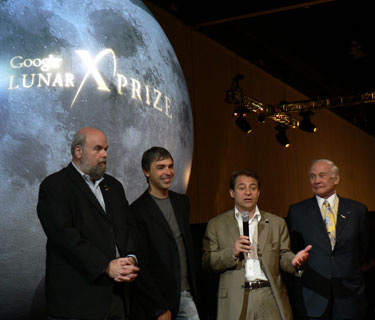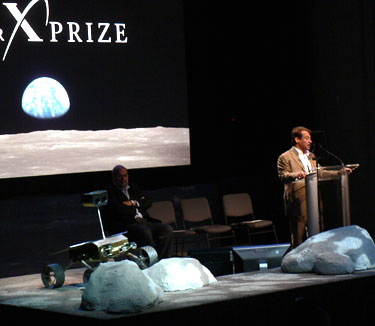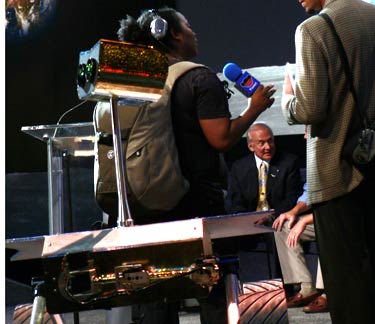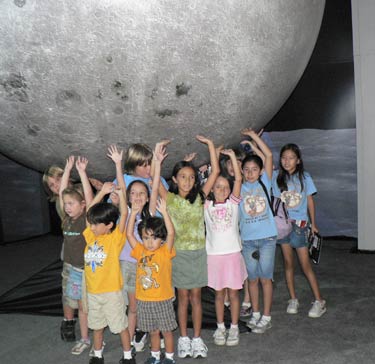|
|
A little-noticed article from last week: the New Mexico Spaceport Authority, which is overseeing development of Spaceport America, needs additional state funding for its office. The money is not for the spaceport development itself, but to build up the office’s staff. The office has a budget this year of $365,000, but needs $1.5 million next year to bring on employees to work with the FAA, Virgin Galactic, and others involved with the spaceport.
That request has the support of the Las Cruces Sun-News in an editorial earlier this week. “It can’t be done on the cheap,” the paper says of the spaceport project. “It’s going to require expertise and experience that the state simply does not have on staff at this time.” The editorial also subtly criticizes neighboring Sierra County, which has yet to hold a referendum on a sales tax increase to help support the spaceport. “If officials in Sierra County, where the spaceport is located, are unwilling to ask taxpayers there for a hike, it will make it extremely difficult to win the support of Arnold-Jones [a state legislator from Albuquerque] and other lawmakers from north of Socorro.”
A few photos from the X Prize event in LA today:
From left: Bob Weiss of the X Prize Foundation, Larry Page of Google, Peter Diamandis of the X Prize Foundation, and Buzz Aldrin answer questions after the press conference.
While Diamandis talked, a small robotic rover (built by the Univ. of Oklahoma) rolled out onto the stage and onto some faux lunar rocks (where it remained until it was moved by hand later in the press event, either by design or because it got stuck)
A closeup of a model of a future lunar explorer, with a famous past human lunar explorer in the background.

During opening ceremonies for NextFest just before the X Prize announcement, a man with a rocket backpack flew over the crowd (literally — my ears were ringing from the noise of the rocket!) to “deliver” a proclamation to the mayor of LA in honor of the event.
A sentimental favorite: Thursday was an educational day at NextFest, with thousands of students in attendance. After the X Prize event was over a group of kids came over and took positions under a giant model of the Moon by the stage. Education and inspriation of youth was a big theme of the X Prize announcement; let’s hope these kids stay inspired.
I just got out of some press events associated with the Google Lunar X Prize announcement this morning here in LA (where I discovered I created a little heartburn among the X Prize folks by linking to the HuffPo piece earlier this morning.) I’ll have more later, but some highlights from the announcement:
- This is indeed a lunar rover prize, with the goal of soft-landing a spacecraft on the Moon, roams at least 500 meters, and returns two “Mooncasts” (hi-res panoramic photos and video);
- The prize is $20 million for the first to achieve the feat, and $5 million for the second; there is also $5 million in additional “bonus” prizes for things ranging from discovering water ice to having the most “ethnically diverse” team;
- Google is providing the $30M in prize money, but will allow other sponsors to come in and support additional bonus prizes;
- The prize expires on December 31, 2014, and the grand prize decreases to $15 million if the prize is not won by December 31, 2012;
- SpaceX will provide Falcon launches “at cost” to competition participants, a savings of about 10 percent from list prizes (according to Elon Musk, who also spoke at the press conference);
- The SETI Institute and Universal Space Networks are also providing communications support for competitors;
- As for why do a lunar lander prize, I asked Peter Diamandis about this after the event. Their top two choices for the next big space prize they wanted to do was a lunar lander prize and a human orbital spaceflight prize. Google was particularly interested in funding the lunar prize (and a human orbital spaceflight prize would have required at least $50M, he said) so that’s the direction they took.
I’ll have more on this later, and also probably in Monday’s issue of The Space Review, as my schedule permits (I have a redeye back to the east coast tonight…)
Later today the X Prize Foundation is scheduled to announce its next major prize competition, which has been billed as “the largest international prize in history” with a Fortune 500 sponsor. However, there is already one credible report about the prize. According to a blog post by Esther Wojcicki on The Huffington Post, today’s announcement will be the $30-million Google Lunar XPrize. the competition will be for the first privately-developed mission to place a robotic rover on the surface of the Moon. The post includes a link to the prize web site, which currently returns a “404 Not Found” error message. (There’s a typo in the link in the HuffPo post: it should be googlelunarxprize.org, not googlelunarprize.org. The googlelunarxprize.org domain is registered to the X Prize Foundation, according to whois.) The article also references a space section of the Google web site; that, too, also returns a 404 error message early this morning.
If this report is correct, then it is not that surprising. A “real” lunar lander competition had long been discussed as a potential long-term prize, either for the X Prize or NASA’s Centennial Challenges program. (NASA deputy administrator Shana Dale will participate in the prize announcement today in Los Angeles, NASA announced yesterday.) And it’s also not that surprising to see Google taking a lead sponsorship role, given that Google co-founder Larry Page is on the board of trustees of the X Prize Foundation and that Google has hosted some X Prize-related events in the past. It does sound more credible than some of the other ideas that have been floated about, like a point-to-point suborbital space prize.
And why should you trust Esther Wojcicki anyway? She’s a high school journalism teacher in Palo Alto, California. She’s also the mother-in-law of Sergey Brin, the other co-founder of Google, so she’s something of an inside source.
The public right now has only a right idea of what SpaceShipTwo and its carrier aircraft, White Knight Two, will look like, based primarily on the promotional animations and images released by Virgin Galactic. Flightglobal.com took the interesting step of using those images and modifying them based on comments on the design made by Burt Rutan last month in a speech in Alabama (which I wrote about and was cited in the Flightglobal.com article.) The revised illustration takes into account the wingspan of WK2 (43 meters) and that it will have four engines; the SS2 design now incorporates a low wing instead of a mid or high wing, which Rutan said was shifted to reduce a dihedral effect on SS1 that caused control problems.
How accurate these new illustrations are is anybody’s guess. The good news, though, is that we won’t have to wait much longer to find out what these vehicles really look like: Virgin Galactic president Will Whitehorn told Flight International that the company plans to unveil the designs of WK2 and SS2 at an event in New York in January.
Yesterday came word that NASA has given Rocketplane Kistler notice of plans to terminate its COTS award because of RpK’s inability to raise $500 million in private funding despite several deadline extensions. The notice is not in and of itself the termination of the award, but instead provides 30 days’ notice of NASA’s termination plans, giving RpK one last chance to round up the money. RpK is not giving up: company CEO George French told MSNBC that the company is “working on possible cures” for its current financial crisis.
The potential COTS termination is not the only problem facing the company. According to the Chicago Tribune, luxury travel company Abercrombie & Kent has filed suit against RpK, claiming that RpK decided to “abandon” the XP suborbital vehicle earlier this year. Abercrombie & Kent had an agreement to market the XP flights but elected to exercise an early-termination clause in the agreement; the company is seeking $3.4 million (plus about $3,000 in arbitration costs for a meeting with a mediator that RpK reportedly skipped) from RpK.
The article also includes quotes from Cindy Cashman, an RpK customer best known for planning the first wedding in space on her XP flight. “I put a large down payment in and I want to get it back,” she told the Tribune.
The Tribune article does mention that RpK denies that it has abandoned the XP, and that the company has actually been working to refine the design of the suborbital spaceplane. George French told NASA SpaceFlight.com that a “new Rocketplane XP configuration” will be unveiled next month at the X Prize Cup in New Mexico. Whether there will be enough money to convert that configuration into flying hardware, though, remains the big question.
An article in an English-language section of the web site of German magazine Der Spiegel briefly discusses the New Mexico spaceport plans announced last week. But—and you knew there had to be a “but” here—the article weighs that against the “enormous” carbon footprint the suborbital spaceflight from there will generate. The key (and final) sentence from the article, after discussing the environmentally-friendly aspects of the spaceport: “But all the fuss about conservation comes across as a bit empty considering the enormous fuel consumption and carbon footprint of each rocket that will launch from the private spaceport, taking space tourists into orbit for $200,000 a pop.”
This is not the first time that the perceived deleterious effects on the environment by suborbital spaceflights have been brought up; an editorial from a New Hampshire newspaper made similar statements in July. Der Spiegel makes no attempt to quantify how big an “enormous” carbon footprint is (perhaps because it’s not so enormous after all), and that’s just plain sloppy journalism.
Who will be the next commercial passenger to take a ride to the ISS on a Soyuz spacecraft in late 2008? Most of the recent speculation has focused on a Russian, after the head of the Russian space agency Roskosmos, Anatoly Perminov, said last week that a “prominent Russian businessman-turned-politician” (as described in an article in The Moscow Times on Monday) was “next in line” to be a space tourist. That mysterious person has since been identified as Vladimir Gruzdev, a “tycoon-explorer” who is the co-owner of the Russian grocery market chain Seventh Continent. Gruzdev also participated in the recent Russian Arctic expedition, where, in a controversial move, a submersible planted a Russian flag on the seabed at the North Pole. (There’s some images about that expedition on Gruzdev’s Russian-language web site.)
While Gruzdev may be the first Russian space tourist (he certainly has both the adventurous streak and the money to pay for the trip), is he going to be the next paying passenger to the ISS? Maybe not. An article in Thursday’s edition of The Korea Times discusses a Zero-G aircraft flight that the CEO of computing gaming company NCSoft, Kim Taek-jin, took this week in the US. Kim himself doesn’t appear to be a candidate for a Soyuz trip, but the CEO of the company’s North American division, Richard Garriott, may be in line for a trip. A source tells the Korea Times: “Garriott is rumored to be on board for a 2008 shot to the space station. It is to be announced in early October along with his new game, ‘Tabula Rasa.’ He can then play his new game from outer space.” Garriott doesn’t have the funds to pay for the trip himself, so presumably the company would be bankrolling the trip. Garriott also has an insider connection: he is on the board of directors for Space Adventures. In a 2005 interview with Sam Dinkin for The Space Review, he explained how he helped open the door for orbital space tourism around 2000, even if a financial reversal prevented him from going himself.
Space Adventures has, as usual, remained tight-lipped about their potential upcoming orbital clients. In a speech last week at the AGI Users Exchange conference in Washington, Space Adventures president and CEO Eric Anderson (himself a former AGI employee) did say that they hoped to have a space tourist perform a spacewalk during a trip to the ISS, perhaps in 2009.
Most people concluded that last month’s Scaled Composites accident would delay Virgin Galactic’s plans to begin suborbital space tourism services; even Burt Rutan admitted last weekend that the accident would delay plans for rocket-powered test flights (without saying exactly what that schedule was.) Richard Branson, though, doesn’t seem to have factored any delay into his plans to begin commercial service, based on these comments in an interview with New York magazine:
Well, as you might know, we’re working on space travel, and Virgin Galactic is going into space in eighteen months’ time. Our spaceships will be done in nine months’ time, and we’ll be doing test flights. Then from there we hope to set up a Virgin hotel in space. We have quite ambitious plans for space travel.
Eighteen months? That may well be “quite ambitious”.
I negelected yesterday to post a link to my article in The Space Review about Burt Rutan’s speech in Alabama and subsequent interview. The article speaks largely for itself: Rutan remains committed to the development of SpaceShipTwo, although the timeline, and even some of the technical details of the propulsion system, are uncertain at this time.
|
|






Recent Comments